GOD OF GAMBLERS, Wong Jin (1989)
Train, East Rail Line, Hong Kong
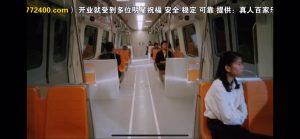
The East Rail Line train cargo presented in the file.
God of Gamblers (1989) is about a famous gambler called Ko Chun who one day was invited to helped Tanaka in Tokyo to revenge Chan Kam-sing who cheated Tanaka’s father and drove Tanaka’s father to commit suicide. After Ko went back to Hong Kong he went to gamble with his friend and offended the mafia boss, Nam. After Ko escaped from Nam’s henchmen on the East Rail Line, he fell into the trap set by Michael Chan, hit his head and lost his memory. He lived with Michael for a while. After a gun fight in Sha Tin and hitting his head again, he found his memory. He finally won the gamble match with Kam-sing. In this film, a fighting scene was filmed in the East Rail Line which was the KCR East Rail in 1910-1996(wikipedia).
In the film, the interior space of the East Rail line train was presented with chiaroscuro which emphasised the depth of the interior space of the train cargo. The emphasised depth of the interior space turned the whole cargo into a narrow enclosed space. The lighting also increased the tension of the scene and emphasised the dangerous atmosphere. In reality, the cargo of the train is visually wider and spacious.
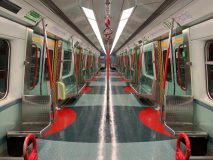
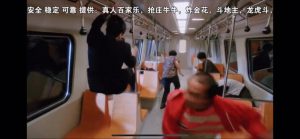 `
`
Left: reality interior space of the train which is in normal lightings. Right: the interior space of the train in the film which has special lighting techniques and Ko.s bodyguard is fighting with one of the mafia members.
In the film, there is a shot where the camera filmed the interior space of the East Rail Line train from the train window. The surface of the train was completely dark, and only the interior was bright. The vision of the interior space was limited by the train window frame. In reality, passengers do not usually view the interior space of the train through the window, unless they are on the other train, and two trains by-pass each other at the same time, and it is difficult to see the interior of the other train through the window. Instead, passengers usually view the interior space of the train inside the train.
`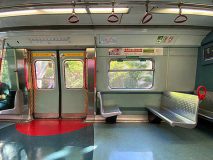
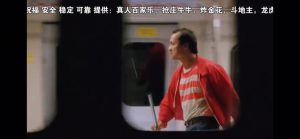
Left: the view of the interior space of the train inside the train. Right: the interior view of the train through the window, and the mafia member is walking towards Ko’s bodyguard.
East Rail Line train is a mass transportation for Hong Kong locals. The fighting scene took place inside the train which allowed both main characters and Nam’s henchmen to blend into the everyday people, and enhanced the dangerous atmosphere of the bloody fighting scene between the main characters and the mafia among the group of normal everyday people. The lighting techniques in the film turned the interior space of the train into a narrow compacted and enclosed space, and turned the interior space of the train into a chamber, where the main characters could not escape easily, the only way of escape was to fight with the mafia. The furniture and the handrail inside the train acted as the weapons for the bodyguard of Ko to fight with the mafia and doge from the attacks. By presenting the interior space through the window of the train, it enhanced the tension of the fight scene, as the movement of the mafia sounded faster, and the vision towards the interior space of the train was limited. These created a voyeuristic objective shot for the audiences to view the scene as they are peeping into this fight.
The East Rail Line train acts as a symbolic public mass transportation that helps to create the dangerous and emergent atmosphere in the fighting scene, and leads Ko to the trail where Michael set up a trap there. This transportation connects two different destinations in the film, and drives the plot.
Ou Yang Jia Qi
UID: u3593487
Reference
wikiland. 2020. MLR_Train_interior_seating. jpg. wikiland, Hong Kong.
nocookie. 2020. MLR_standard_class. jpeg. nocookie, Hong Kong.
“東鐵綫.” n.d. 维基百科. Accessed March 14, 2022. https://zh.wikipedia.org/wiki/%E6%9D%B1%E9%90%B5%E7%B6%AB.
“港鐵中期翻新列車.” n.d. Wikiwand. Accessed March 14, 2022. https://www.wikiwand.com/zh/%E6%B8%AF%E9%90%B5%E4%B8%AD%E6%9C%9F%E7%BF%BB%E6%96%B0%E5%88%97%E8%BB%8A
You have compared and contrasted the spaces as presented in the film and those in reality. Your analyses of various techniques are quite detailed and you have applied various concepts we have discussed to further understand the setting. Images are also nicely arranged to facilitate your points. Lastly, please avoid using wiki as your sources as they are not sufficiently credible.